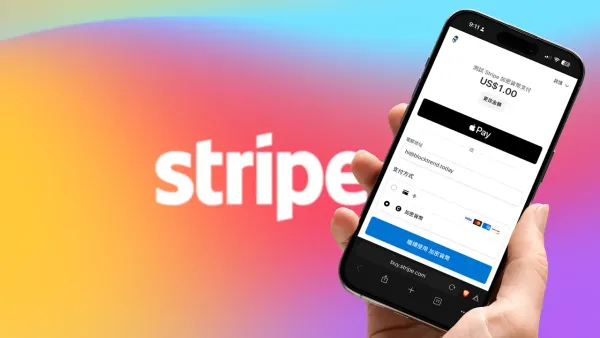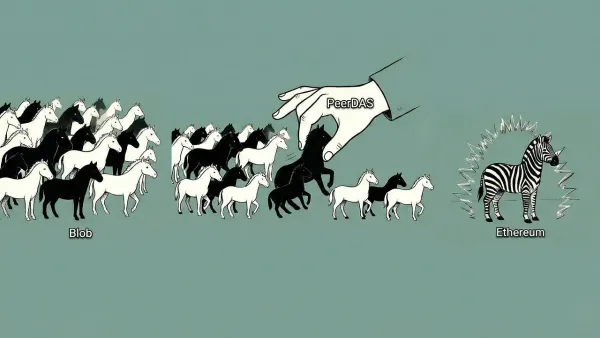Ethereum’s Coming-of-Age Ceremony! The Pectra Upgrade Prepares Wallets and the Blockchain to Connect with the Real World
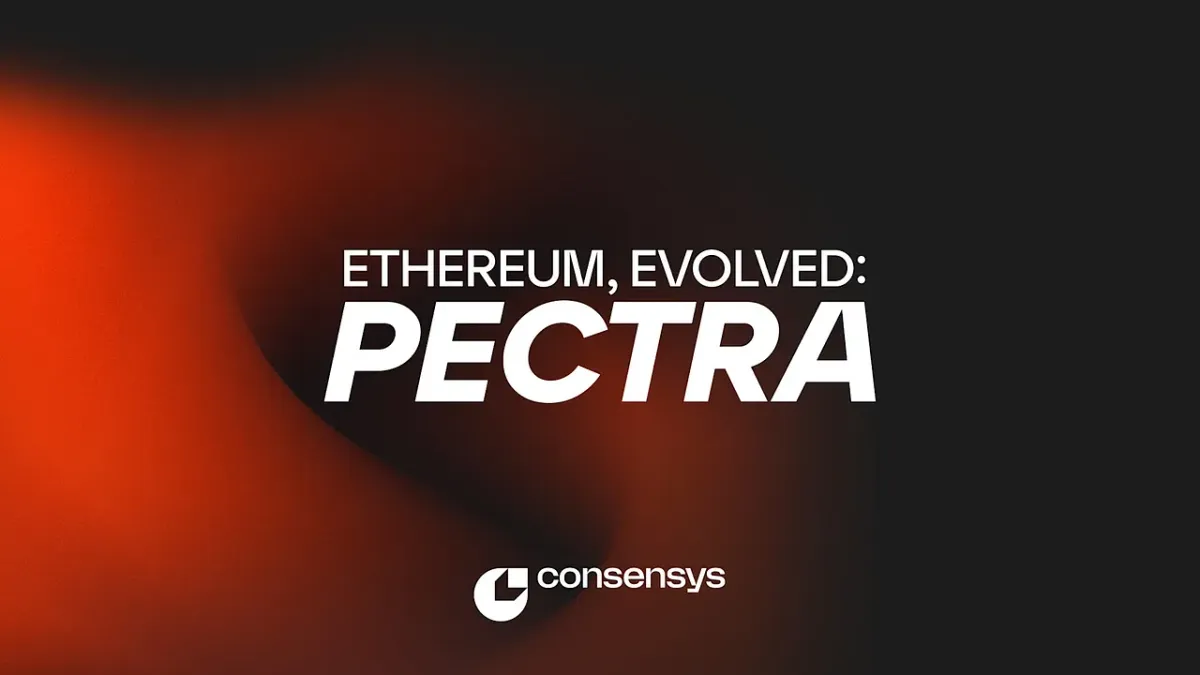
GM,
Over the past week, ETH surged by 40%—a sudden “Ether Blitz,” so to speak. As for the reason? No one really knows for sure. But just one day before the price spike, Ethereum had completed its most important milestone of 2025: the Pectra upgrade (a combination of Prague and Electra).

There are already many introductions to the Pectra upgrade online—Blocktrend has also recorded two interview episodes on it1 2. This article approaches it from a different angle: I believe Pectra is Ethereum’s coming-of-age ceremony, symbolizing its first real integration with the broader world.
A Rite of Passage
I first encountered cryptocurrencies in 2017, right at the height of Ethereum’s ICO boom. At the time, countless startups were holding whitepapers in one hand and crypto in the other, proclaiming visions of disrupting the world from the stage—while few in the audience actually understood blockchain. People were mainly afraid of missing out on the next big investment. A popular saying back then was, “While VCs are still putting on their suits, ICOs are already fully funded!”
But in the end, only dreams move that fast. Many teams realized after starting that there was no real demand and the infrastructure was lacking. Most investors only cared about price appreciation, not whether the product had any real use. When the bubble burst, prices plummeted. People began to label crypto a scam, and mining became public enemy number one for environmentalists.
This narrative went on to shape Ethereum’s upgrade priorities in the years that followed. In retrospect, Ethereum's development roadmap could be summed up as:
Reduce energy consumption → Lower transaction fees → Improve user experience. In 2022, Ethereum ditched energy-hungry proof-of-work (PoW) mining3 in favor of proof-of-stake (PoS), which consumes power comparable to an electric fan. In 2024, the Cancun-Deneb (Dencun) upgrade drastically reduced fees on Layer 24, paving the way for non-financial applications to go on-chain. Now, the Pectra upgrade further reduces fees—and more importantly, begins to improve the wallet experience. And the latter feels more tangible.
Enhancing User Experience
The biggest highlight of the Pectra upgrade is its improvement to the blockchain user experience. For most people, the biggest hurdle to using blockchain is the wallet. But wallet developers have long felt constrained: many features weren’t technically impossible, but limited by Ethereum’s underlying system. This time, the system upgrade finally gives wallets new powers.
imToken researcher Nic previously revealed that the Pectra upgrade will enable two major wallet features: batch transactions and gas fee payments using ERC-20 tokens. Nic predicted that wallets would need about six months post-upgrade to support these new features—but to everyone's surprise, MetaMask, OKX, and Ambire all announced support immediately after Pectra went live. The speed was remarkable!
After trying them out, I found Ambire to be the most integrated wallet so far, so I’ll use it to demonstrate the new features introduced by Pectra. Other wallets will likely follow suit in the near future.
The first is batch transactions. A scenario where this stands out is airdrops. Previously, each transaction could only send tokens to one recipient, so if you wanted to airdrop to multiple users, you had to repeat the process—and pay gas fees multiple times. With Pectra, wallets now support sending to multiple addresses in a single transaction. It’s simple to use and only requires one gas fee.
The image below shows me sending two separate $1 transfers to different addresses—all within a single transaction. Super convenient.
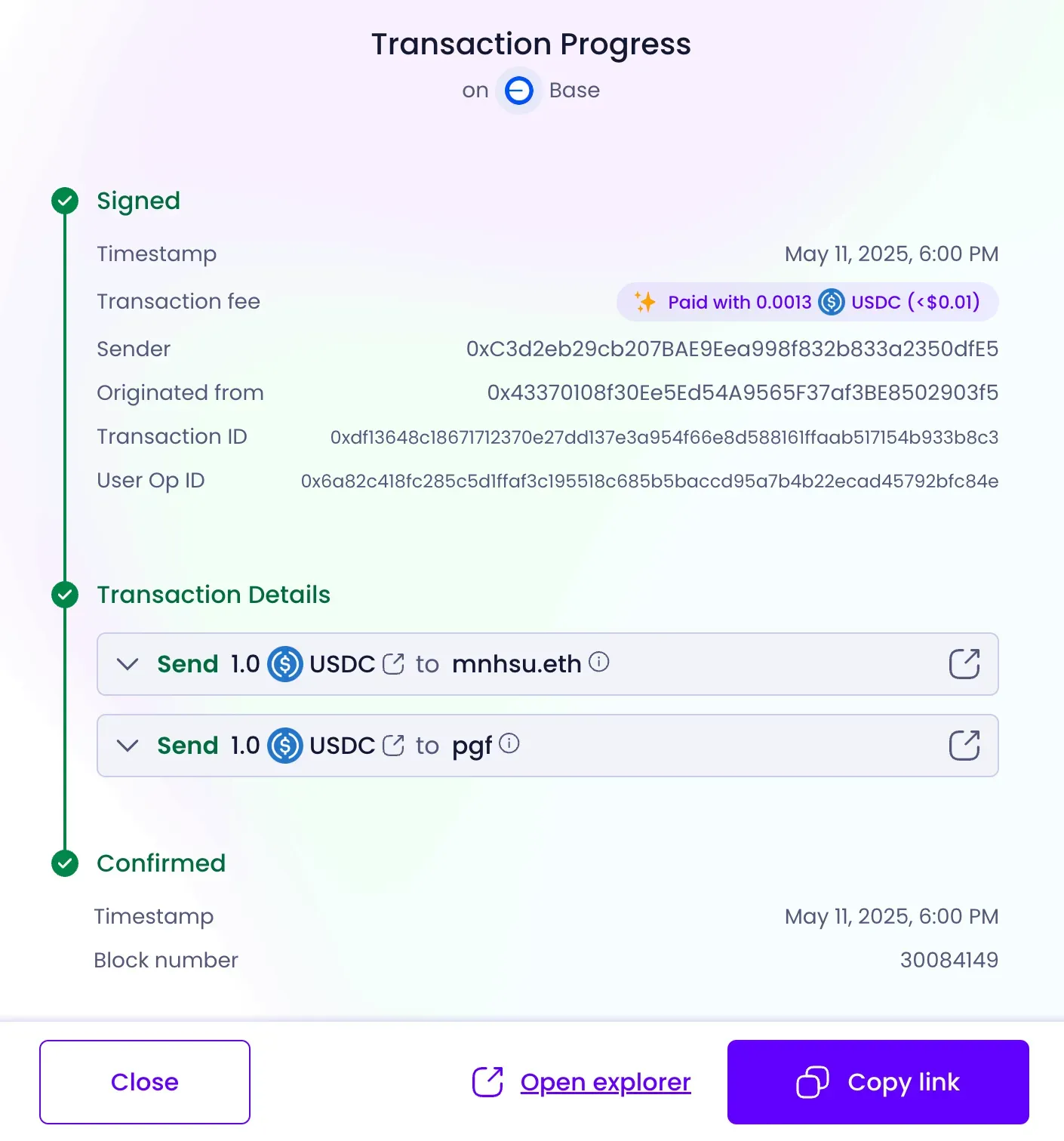
This screenshot reveals another highlight — the transaction fee was paid in USDC instead of ETH.
Anyone who has ever used a crypto wallet has probably run into the frustrating issue of not having enough ETH. Say I create a brand-new wallet and receive 100 USDT. If I want to transfer it to an exchange to cash out, I’ll hit a roadblock — the wallet has no ETH to pay for the gas fee. A reasonable person might think, “Fine, I’ll just swap some of that USDT for ETH.” But no — even swapping USDT to ETH requires ETH to cover the gas fee. It’s the classic blockchain version of the chicken-and-egg problem 😂. Fortunately, the Pectra upgrade finally breaks this loop. There’s no longer a need to keep chasing ETH just to make basic transactions.
The second major highlight of the Pectra upgrade is its further reduction of gas fees.
Lowering L2 Fees
Lowering fees on Ethereum is notoriously difficult because of its unwavering commitment to decentralization — a sharp contrast with Solana.
One of Solana’s speed advantages comes from its high-performance node hardware requirements. But this also means only well-resourced companies can afford to run a node. A Solana validator must have a 32-core CPU, at least 256 GB of RAM, and a minimum of 2TB of solid-state storage. Just the hardware alone costs over $4,000, and average monthly cloud hosting fees are about $1,000. High specs, fewer nodes — of course Solana is fast.
In contrast, Ethereum insists that even a home computer should be able to run a node, to stay truly decentralized. Lower specs, more nodes — but that means it can't scale through brute-force speed. So Ethereum relies on Layer 2 networks (L2s) to handle scaling. The chart below shows the number of transactions on Ethereum’s mainnet vs. its L2s since 2022. Users have already begun migrating to networks like Base, Arbitrum, and Optimism (OP).
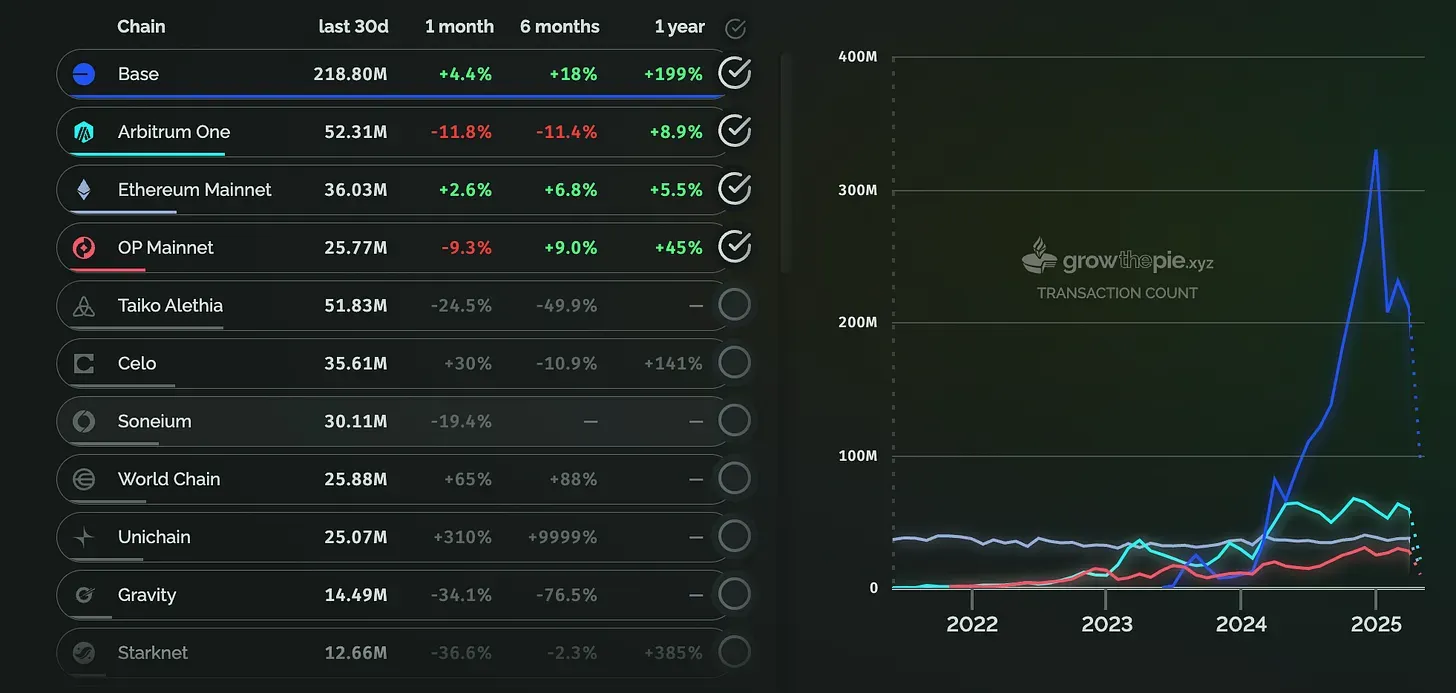
I had thought that with last year’s upgrade, Ethereum had already achieved its goal of lowering transaction fees. But at a recent event, I spoke with Vitalik, who clarified that Ethereum’s most important ongoing task is still to make Layer 2 (L2) fees even lower.
I asked, “Aren’t they low enough already?”
He replied, “For certain enterprise applications, not yet.”
Take the Base chain as an example, shown by the blue line in the chart below. After the Pectra upgrade, transaction volume on Base surged (left chart), while fees remained at a low level (right chart). This is the initial impact of the Pectra upgrade. But in today’s usage landscape — where most activity is still investment-driven — whether L2 fees are $0.001 or $0.0001 hardly matters. Both feel essentially free.
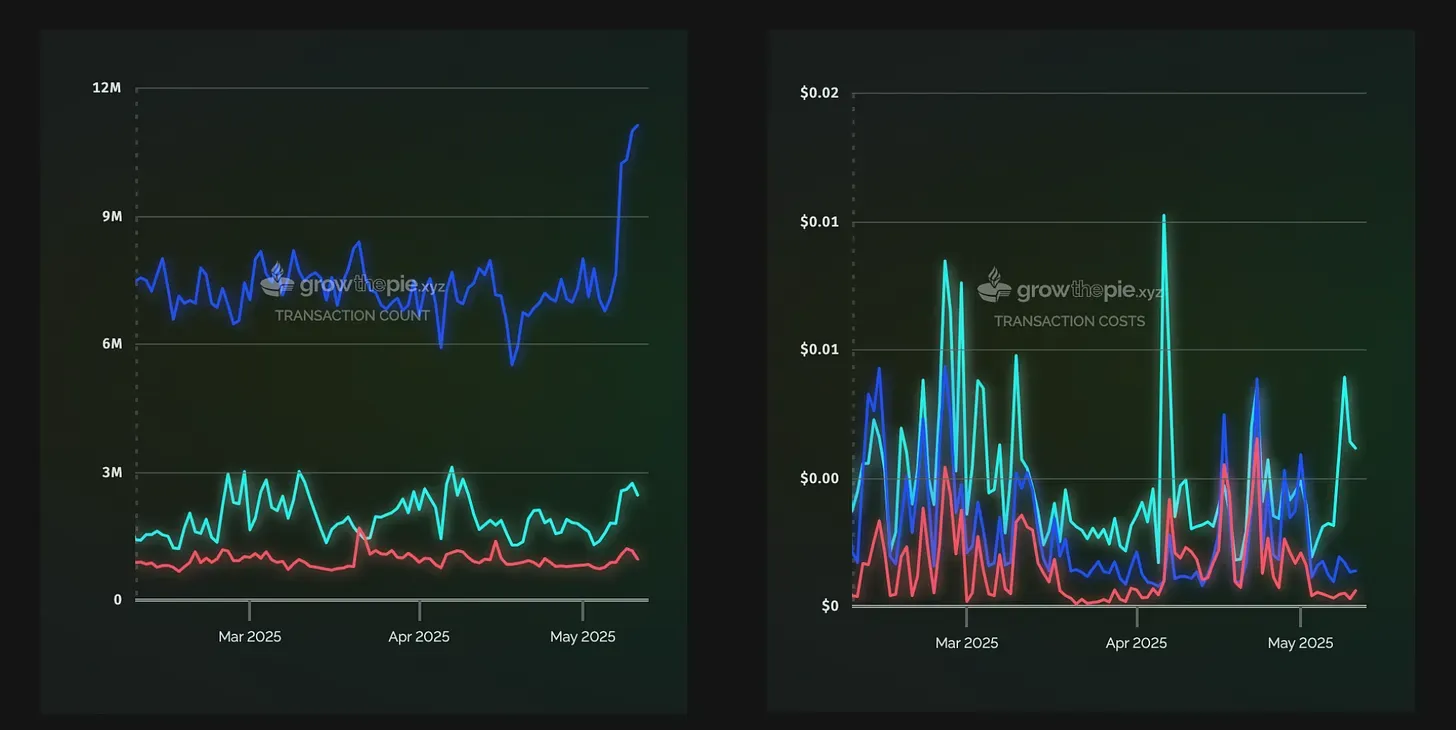
But Vitalik believes that bringing finance on-chain isn’t enough. Social interactions, entertainment, and identity should also have their on-chain counterparts. When you consider these everyday applications, it becomes easier to understand why transaction fees still need to drop further.
The Pectra upgrade feels like Ethereum’s coming-of-age ceremony. Both of its major changes point toward greater integration with society. Ethereum has moved past its rebellious youth — the phase of “disrupting the world” at every turn. Now, instead of trying to change user behavior, Ethereum stays true to its principles while adapting to reality. That’s what sets Pectra apart from previous technical upgrades.
However, this upgrade has also brought unexpected challenges for law enforcement.
Harder to Trace for Investigators
Prosecutor Hung Min-Chao of Taiwan’s High Prosecutors Office recently posted a reminder on social media: In the past, law enforcement agencies often relied on analyzing the source of gas fees to identify anonymous wallets. But after the Pectra upgrade, that critical clue has been cut off.
Fraud rings no longer need to pre-fund puppet wallets with ETH for gas — they can now pay directly using the stolen assets themselves. If law enforcement continues to follow old tracing methods, they may end up targeting wallet developers who facilitated the gas payments, instead of the actual fraudsters.

In addition, the Pectra upgrade requires users to manually approve it, which is likely to lead to phishing attacks disguised as upgrade notifications, tricking users into signing malicious transactions. If such incidents become frequent, people may prefer not to upgrade at all.
Following this coming-of-age milestone, Ethereum is no longer just about ideals and slogans — it must now be prepared to face a more realistic and complex world.
- Ethereum’s Pectra Upgrade (Part 1): Making Private Key Wallets Smarter
- Ethereum’s Pectra Upgrade (Part 2): Unlocking Compounding Yields for ETH Stakers — But Will Ethereum Become Centralized?
- The Ethereum Merge: Upgrade Roadmap and the Meaningless Forks by Miners
- Ethereum’s Most Tangible Upgrade Yet! Dencun Cuts Fees Tenfold and Unlocks New Business Models



